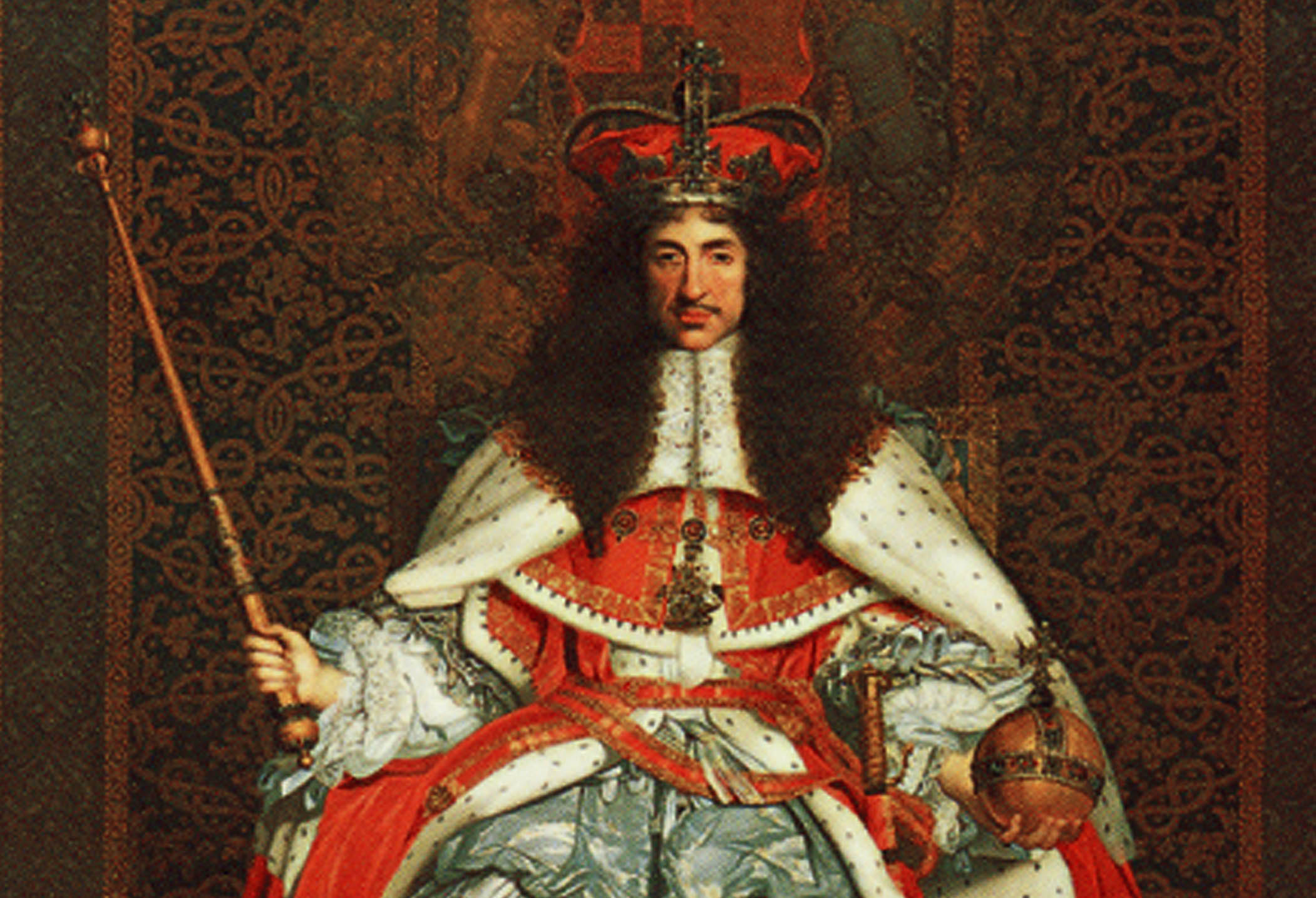‘The Merry Monarch’ was very merry indeed. Known for his love of partying and women Charles II brought fun back to England in a big, big way. Even before his return to England however, Charles was having fun in his own way, mostly with women. He acknowledged over a dozen illegitimate children with several mistresses, though he had several others with whom he had no children. Unlike many monarchs Charles maintained a number of mistresses at any one time rather than a single maîtresse en titre (official mistress at court). Unsurprisingly, considering the larger than life personality of the king, the women who captured his heart were also strong characters in themselves and as most of them were in ‘service’ to the king at the same time there was plenty of opportunity for conflict.
Charles’ relationships with women ranged from one night affairs, keeping them as minor mistresses and installing them at court as part of his ‘harem’. He fathered a number of illegitimate children during his exile in France but, although extremely generous to the women he was involved with, he did not offer these ladies any position at court upon his accession with the exception of Barbara Palmer. As king, again, he maintained numerous casual liaisons including a number of affairs with his wife’s ladies in waiting. However he also kept his long term mistresses in fine state providing them with money, housing and sometimes with a position at court. He was also generous towards his children and conferred numerous titles on those whom he fathered.
The Harem
Barbara Palmer
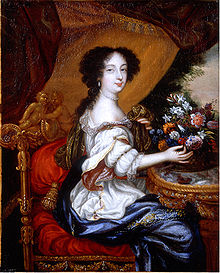 Barbara Palmer was one of the most notorious women to be involved with Charles and also one of his longer lasting liaisons; maintaining her position for almost fifteen years and presenting him with five children. Charles did not acknowledge her sixth child.
Barbara Palmer was one of the most notorious women to be involved with Charles and also one of his longer lasting liaisons; maintaining her position for almost fifteen years and presenting him with five children. Charles did not acknowledge her sixth child.
Born Barbara Villiers to a royalist family, Barbara married Roger Palmer in 1659 a year before she became the king’s mistress. She met the king in 1660 during his exile on the continent, during which time she became his mistress and fell quickly pregnant. She gave birth to Lady Anne Palmer the following February, shortly after Charles had been restored to the English throne. Although married, she and her husband separated in 1662, he continued to benefit from his wife’s relationship however as Charles bestowed titles upon him.
Meanwhile Charles was involved in negotiations for his own marriage, and agreed to marry the Portuguese princess, Catherine of Braganza. The two were married in 1662 during which time Barbara was heavily pregnant with her second child; her first son by Charles. Charles went as far as to delay meeting his wife after her arrival in England because he was spending time with Barbara. Shortly after the marriage Charles arranged for Barbara to become a lady of the bedchamber, something which greatly antagonised the queen and caused the first conflict within their marriage; Catherine refused to accept her while Charles refused to back down. The King isolated his wife and dismissed her Portuguese retinue leaving her friendless until she accepted Barbara into her court, which she eventually did albeit reluctantly.
Barbara was largely unpopular at court due to her behaviour which was scandalous even for a mistress of the king. She entertained a number of lovers, was extravagant in her dress and was notoriously bad tempered. She frequently fell into great rages at her royal lover when he was not inclined to grant her a particular favour. On one occasion where he refused to acknowledge one of her children as his own she threatened to kill her children, in another instance she threatened to smash the newborn baby on the floor in front of him if he did not acquiesce which he immediately did so.
Her influence was dependent on how many other mistresses Charles was currently involved with, though her political power was substantial until her dismissal. In her later years her behaviour had become more bizarre and lascivious. She conducted numerous indiscreet affairs, to the bemusement of the king, while trying to pass off her lover’s children as his. After the great fire of London she went to St Paul’s Cathedral where the mummified body of a bishop was on display while the catacombs were repaired. After asking for time alone with the corpse to pray, she performed an oral sex act on the body and removed the penis with her mouth. By 1673, tired by her antics and dramatic behaviour, Charles had her leave court though he was assisted in this by the Test Act of the same year, which barred Catholics from holding positions at court (Barbara had converted ten years earlier).
She left for the continent where she engaged in a string of unsuccessful romances, as her partners drained her of whatever fortunes she had and left her destitute. When her husband died, she remarried, but again her choice was ill advised and she had him later prosecuted for bigamy and cruelty. She died in 1709 at the age of sixty eight.
Frances Stewart
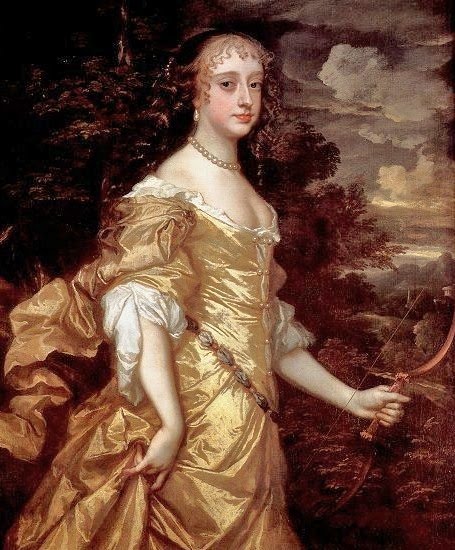 Frances Stewart was probably the only woman involved with Charles II who managed to reap the rewards of being a mistress without having any sexual relations with the king. Frances was dispatched to the English court in 1662 by the king’s sister who felt she would make a fitting addition to the Queen’s household. Charles apparently fell in love on the spot even though she was only fourteen. She quickly became a universal favourite with all at court, even with the Queen despite the rumours of an affair between her and the king. Frances encouraged the relationship in every way, except the most physical. She spent time with Charles engaging in his favourite pursuits, she was generally good natured and of course very beautiful but without political agenda, a stark contrast to the tempestuousness of Barbara Palmer, who was for the first time threatened as the recognised maîtresse en titre.
Frances Stewart was probably the only woman involved with Charles II who managed to reap the rewards of being a mistress without having any sexual relations with the king. Frances was dispatched to the English court in 1662 by the king’s sister who felt she would make a fitting addition to the Queen’s household. Charles apparently fell in love on the spot even though she was only fourteen. She quickly became a universal favourite with all at court, even with the Queen despite the rumours of an affair between her and the king. Frances encouraged the relationship in every way, except the most physical. She spent time with Charles engaging in his favourite pursuits, she was generally good natured and of course very beautiful but without political agenda, a stark contrast to the tempestuousness of Barbara Palmer, who was for the first time threatened as the recognised maîtresse en titre.
In 1663 the Queen developed an illness which left her fighting for her life. Although Charles remained by his wife’s side and comforted her throughout, there were rumours that he would marry Frances if he were to be widowed. After the Queen recovered it was thought that Charles might divorce her in favour of Frances, however this is probably unlikely considering how staunchly Charles defending his marriage, even in light of his numerous infidelities.
Charles continued to court Frances for a number of years, even going so far as to having her pose as ‘Britannia’ for the new English coinage in 1664. Despite the offers of lands, titles and the demonstrations of the King’s affection, evident if nothing else by the sheer length of time he courted her, Frances maintained her virginity and in 1667 eloped with another Charles Stuart, the Duke of Richmond and Lennox against the King’s wishes. Infuriated Charles insisted he would never see her again, but his temper was short lived. Two years later Frances fell deathly ill with smallpox which summoned the King to her bedside where he forgave her all and upon her recovery, returned her to court. By this time other ladies were prominent at court and there was no hint of romantic affiliation this time. Instead Charles provided for both her and her husband and ensured that Frances was well financed after her husband’s death.
Moll Davis
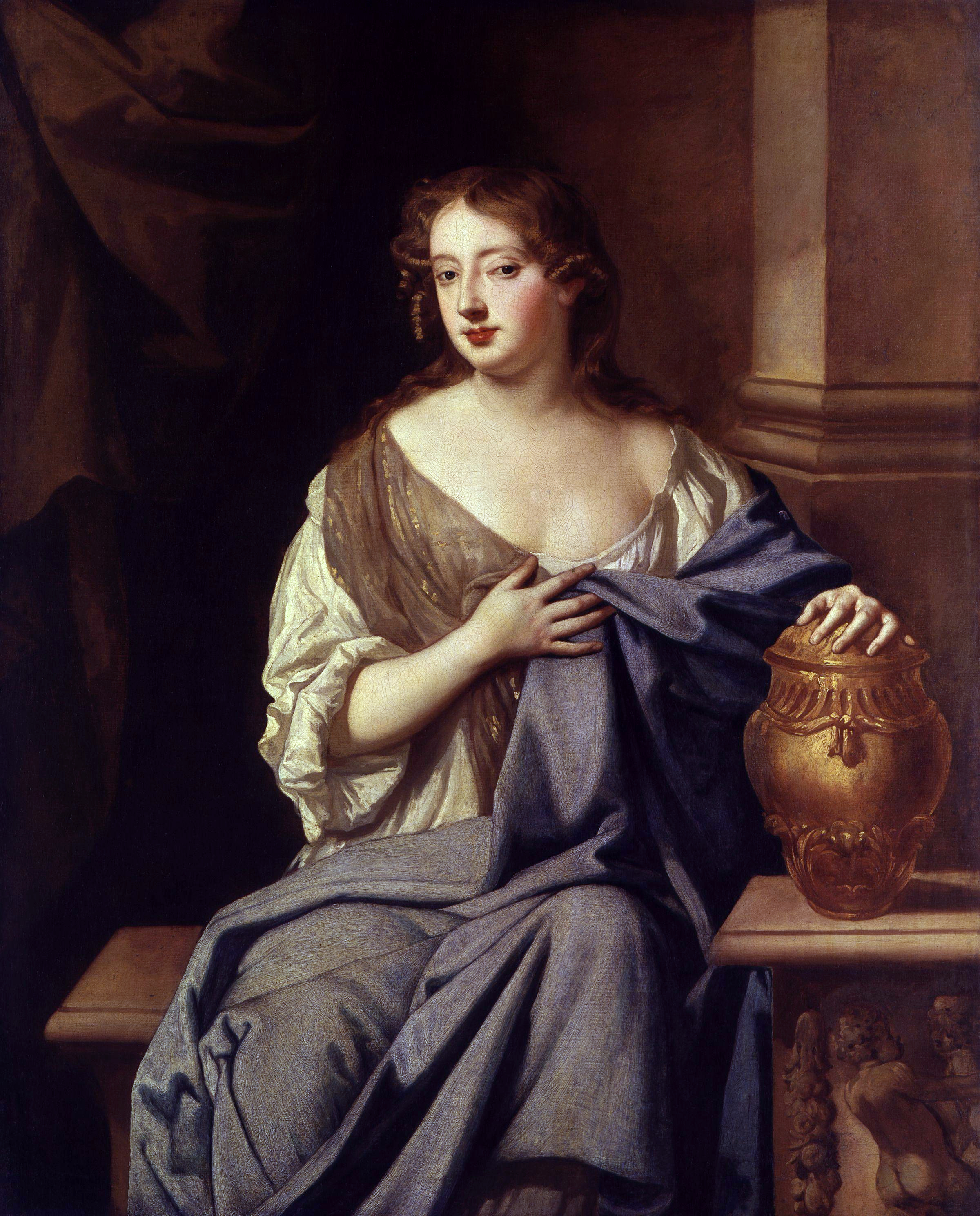 Mary ‘Moll’ Davis became Charles’ mistress around 1667, after he had seen her on stage. She was a popular actress and comedienne and despite her obscure origins she quickly secured the King’s favour. She was not the most humble of mistresses, flaunting the King’s gifts in the faces of Charles’ mistresses. As well as a house, Charles lavished her with jewellery and gave her a ‘fine’ coach which she paraded past the houses of Barbara Palmer and Nell Gwynn.
Mary ‘Moll’ Davis became Charles’ mistress around 1667, after he had seen her on stage. She was a popular actress and comedienne and despite her obscure origins she quickly secured the King’s favour. She was not the most humble of mistresses, flaunting the King’s gifts in the faces of Charles’ mistresses. As well as a house, Charles lavished her with jewellery and gave her a ‘fine’ coach which she paraded past the houses of Barbara Palmer and Nell Gwynn.
While Barbara railed against her, Nell took matters into her own hands. When complaining to Charles of Moll’s behaviour failed, Nell invited Moll to dinner, knowing that Charles had made arrangements to visit Moll later that evening. While dining, Nell slipped a laxative into her rival’s food which forced Moll to disappoint the king when he arrived. Although she gave birth to Charles’ daughter the Lady Mary Tudor she did not maintain his affections, and in true generous style when he dismissed Moll he granted her a substantial pension.
Nell Gwyn
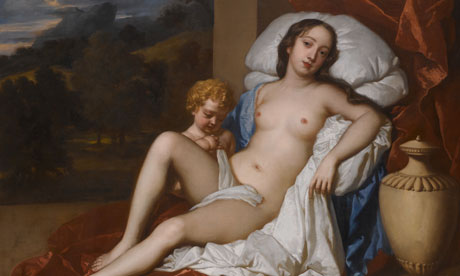 Eleanor ‘Nell’ Gwyn is perhaps the most well known of Charles’ mistresses because of her ‘rags to riches’ background. Hailing from an obscure, low born London background Nell began her theatre career selling oranges in the stands. By this time Nell was certainly having affairs with those involved in the theatre and was definitely sleeping with Charles Hart, a famous actor of the day. Nell worked her way onto the stage where she impressed with her comedic performances. She would have met the King on occasion and she joined the King’s Company which performed privately for the court while the city was affected by the Great Plague.
Eleanor ‘Nell’ Gwyn is perhaps the most well known of Charles’ mistresses because of her ‘rags to riches’ background. Hailing from an obscure, low born London background Nell began her theatre career selling oranges in the stands. By this time Nell was certainly having affairs with those involved in the theatre and was definitely sleeping with Charles Hart, a famous actor of the day. Nell worked her way onto the stage where she impressed with her comedic performances. She would have met the King on occasion and she joined the King’s Company which performed privately for the court while the city was affected by the Great Plague.
Initially Nell’s affair with the King began on rocky ground when she was dismissed before even beginning her court career as she was thought to have asked for too much money. Yet Charles was obviously taken with her, as shortly afterwards in April 1668 they began a relationship. Although Nell rarely asked for anything, she was put out that the King rented her house while he had outright bought and given other mistresses houses. Despite Charles’ penchant for generosity, Nell did not make enough from her relationship with Charles to give up the stage, though after giving birth to two sons by him she eventually did so.
Nell was popular among the court because of her bawdy wit. She offered Charles an escape from the sophistication of the court and was known for her barbed tongue which she often employed against her primary rival for the King’s attention; Louise de Kérouaille. Famously, when her carriage was mobbed by a dissatisfied crowd mistaking her for the French Louise, she called out to the people, “Pray good people be civil, I am the Protestant whore,” much to their amusement and cheers. Nell also remained utterly faithful to Charles, despite offers from elsewhere and in return he recommended her to his brother with his dying words, ‘Let not poor Nelly starve.’ She survived Charles only by two years despite her youth, dying of a stroke in 1687.
Louise de Kérouaille
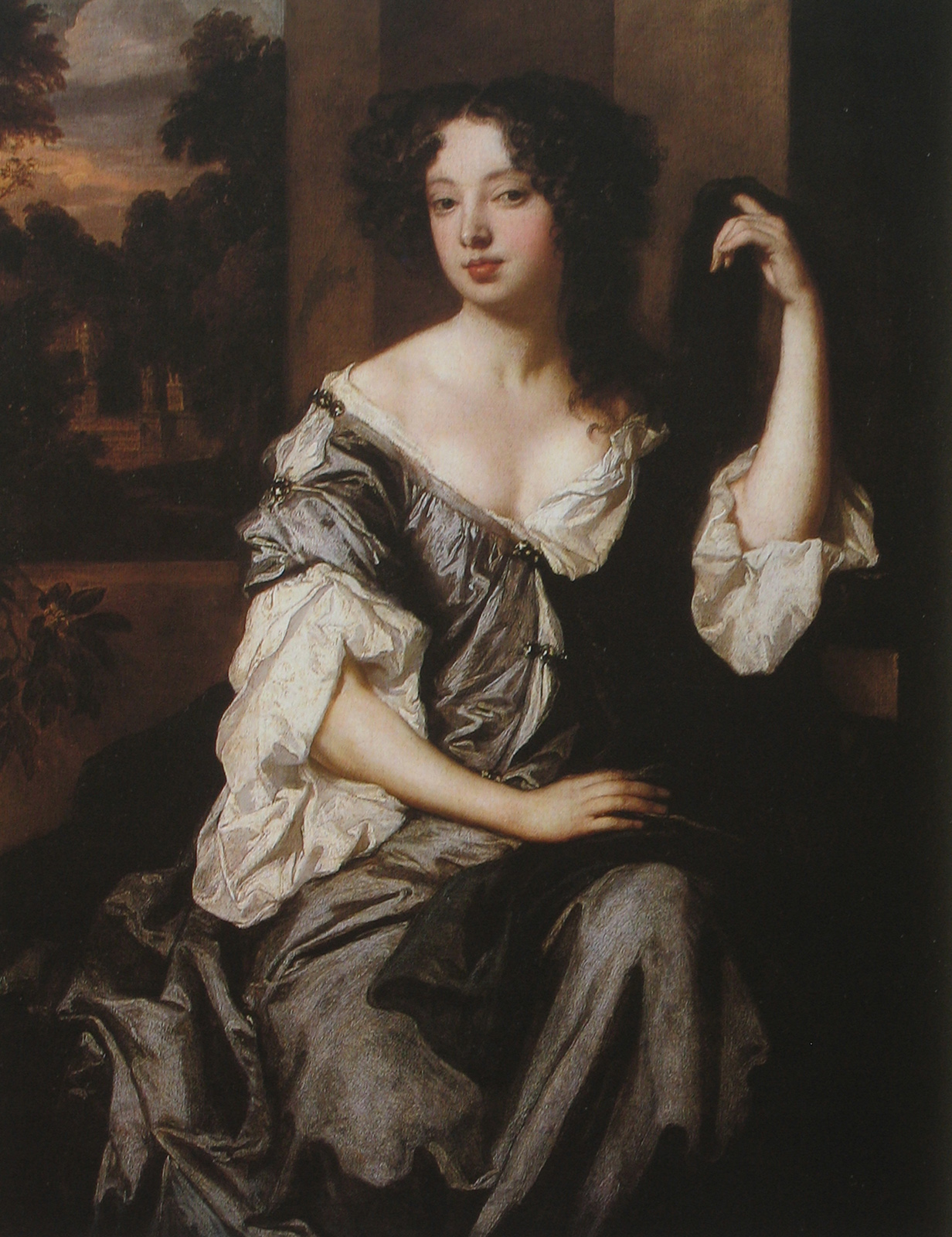 Although it was thought that Louise was placed into Charles’ bed by the French king there is no evidence that she went there other than her own volition. Louise had been a lady in the household of Charles’ sister, the Duchess of Orleans, and was left without position upon her sudden death. Charles invited her to become a lady in waiting to his wife. She arrived in England in 1670 and almost immediately became the King’s mistress, replacing Barbara Palmer as maîtresse en titre.
Although it was thought that Louise was placed into Charles’ bed by the French king there is no evidence that she went there other than her own volition. Louise had been a lady in the household of Charles’ sister, the Duchess of Orleans, and was left without position upon her sudden death. Charles invited her to become a lady in waiting to his wife. She arrived in England in 1670 and almost immediately became the King’s mistress, replacing Barbara Palmer as maîtresse en titre.
When her position was secure, the French king began sending her gifts and funding her lifestyle, for as long as she represented French interests. Between this and the revenues provided by her lover Louise became an extremely wealthy woman, becoming the Duchess of Portsmouth in 1673. She was however universally disliked in England because of her French interests and Catholicism. She found an unlikely ally however in the person of Charles’ queen; Catherine because of the respect Louise treated her with. When the Test Act removed Catherine’s Catholic ladies, the Queen herself intervened to protect Louise’s position.
She had one child by the King early in their relationship in 1672, a son, though after this she became less sexually available to Charles probably due to syphilis which she contracted through their relationship. Despite their lack of physical intimacy, she maintained Charles’ affections to the end of his life. In their early relationship she was tempestuous and frequently resorted to tearful outbursts to maintain his affection, but recognised the point at which it became necessary to mellow and instead became a loving companion to him. On his deathbed she arranged for his conversion to Catholicism and the King commanded his brother to ensure she was looked after, along with the Queen and Nell Gwynn.
Hortense Mancini
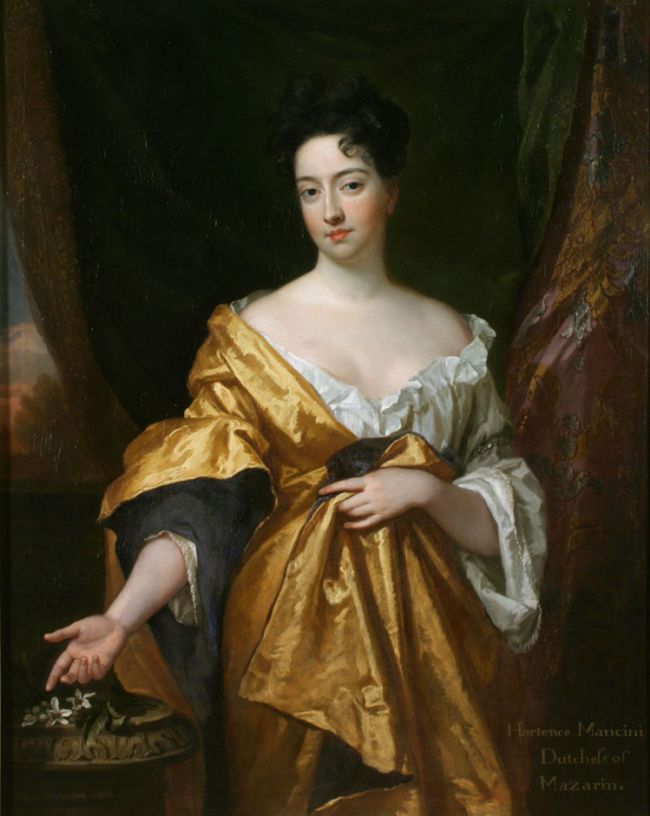 The Duchess Mazarin, Hortense Mancini was not only a mistress of Charles, but narrowly missed out on becoming his wife. Charles had proposed marriage to her in 1659, just months before the Restoration, however her uncle, Cardinal Mazarin, believing him to be no closer to his throne than he had been at the start of his exile rejected the offer. When Charles became King shortly afterwards Mazarin desperately backtracked and attempted to re negotiate the marriage. Despite a considerable financial incentive Charles refused and went on to marry Catherine of Braganza.
The Duchess Mazarin, Hortense Mancini was not only a mistress of Charles, but narrowly missed out on becoming his wife. Charles had proposed marriage to her in 1659, just months before the Restoration, however her uncle, Cardinal Mazarin, believing him to be no closer to his throne than he had been at the start of his exile rejected the offer. When Charles became King shortly afterwards Mazarin desperately backtracked and attempted to re negotiate the marriage. Despite a considerable financial incentive Charles refused and went on to marry Catherine of Braganza.
Instead Hortense was married to Armand-Charles de La Porte, but the marriage was unhappy and unsuccessful due to his consistent mistreatment of her, which may have stemmed from mental instability on his part. Hortense was isolated from her friends, banned from male company and after discovering that she was having a lesbian affair he had her confined to a nunnery. In 1668, she eventually escaped to Italy where numerous men around the continent pledged to support her, providing her with houses and financing her lifestyle and salon.
In 1675 she visited England, supposedly to visit her cousin, Charles’ sister in law. By the following year she was Charles’ maîtresse en titre, briefly replacing Louise de Kérouaille. Hortense took a number of lovers, including a rather public affair with Charles’ daughter Anne Palmer, the Countess of Sussex. The Countess’ husband was not as understanding and removed his wife from court. When Hortense began affairs with visiting dignitaries however, including the Prince of Monaco, Charles’ patience was strained too far and the resulting quarrel saw her dismissed from his bed and swiftly replaced with Louise.
They remained friends on good terms however, even though Hortense lost her pension and other gifts from the King. She remained in England for the rest of her life, re establishing her salon in her home in Chelsea where she lived until her death.

